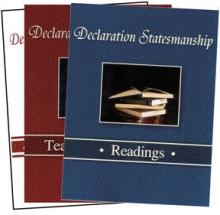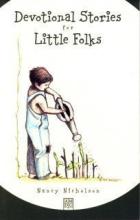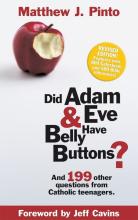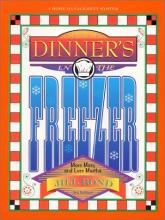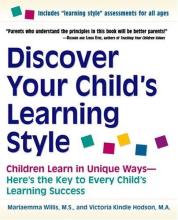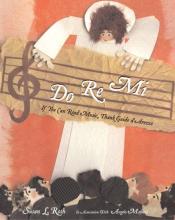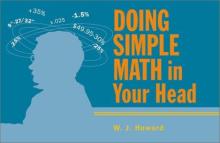No name
Declaration Statesmanship
Since the last review of this work, the name has changed, and it now comes with a teacher's manual and book of readings. It was formerly called America's Declaration Principles in Thought and Action. The main text has not changed, but is now printed in an attractive 8 X 11 comb-bound book.
Original Review:
The stated purpose of America's Declaration Principles in Thought and Action, a text for use by high school students, is to, " . . . help the young citizens of America to understand how the principles of the American founding are crucial to the pursuit of happiness which is their birthright." The text follows the thought and development of the Declaration as the founding document of our country and then traces its spirit through two centuries of application in the political life of the country. The book is only nine chapters and 154 pages, but it is packed full of extension ideas, suggestions for further reading and thoughtful reflections that would easily fill a year's civics course.
The format of the book is very straightforward and the text quite readable, even enjoyable. What makes this book exceptional in the world of high school history publishing are the suggestions for further reading, questions for reflection and possible extra study or writing assignments given in each chapter, sometimes several times in a chapter. ALL of these suggestions are at higher levels of thinking which require the student to reflect, analyze, compare, critique and draw conclusions. This is truly a text to challenge and refine thinking skills while studying an essential topic in today's world.
Here is an example of a question from the "for reflection and research" section of Chapter 5 (which examines the Declaration in detail): "In a certain way, it was easier for the founders to see that they were serving in a high cause, an honorable one, in the revolution, than it is for us to see that we are doing something similar in performing our civic duty today. More seems to be demanded of a man to stand up to a line of British Grenadiers that to decide rightly on a school bond issue, or to obey the zoning laws of his county. What else might lead us to deny the honorable character of public service in our time? What can be said in defense of it? Lincoln will consider, in a famous speech he gave as a young man, in 1838, the different challenges facing the founding generation and a generation whose task is to preserve the Republic. What do you think are the threats to liberty today, and what virtues and knowledge are necessary to defeat them?"
I quite honestly have never seen anything like this.
In addition, at the end of each chapter is an outline of the chapter which would be a great study aid for review or help students organize their basic comprehension of the material.
So what about the content? The authors assert that the Declaration, as the founding document of the country, is the "spirit of the law" beneath the "letter of the law," the Constitution. So we should read/interpret the Constitution in the light of the Declaration. To do this we must understand the Declaration first. So that is where the book begins. Chapter One makes the argument that our country began, not with the end of the war, not with the Constitution, but with the Declaration. So its first principles are the first principles of our country. Chapter Two describes some of the history of political thought which led the colonists to believe that they had a right to rule themselves. Chapter Three is the Declaration itself. Chapter 4, entitled "The roots of American Liberty," discusses the sources of the idea of democracy throughout history. Sources quoted include ancient philosophers, such as Aristotle and Cicero, more modern philosophers, such as John Locke, several colonial period clergymen and a Catholic saint.
Chapter 5 examines the Declaration in detail and contains some excellent suggestions for thinking and research. Chapter 6, divided into two parts, examines the Articles of Confederation and the Constitution. Direct correlation is made between the complaints listed in the Declaration and the wording of the Constitution. Chapter 7 picks up the subject of slavery as the great stain on the American experiment and as a test of the founding principles of our country. By the standard of the Declaration, we - the courts, the courts, the Congress, and, according to the authors, the policy of the founders - failed.
Chapter 8 begins a treatment of the kind of statesmanship that a true adherence to the Declaration would produce. It begins with Lincoln. This chapter is the most lengthy and the most challenging of the book. It traces the history of the pre-Civil War era and then the effects of reconstruction in the South leading up to the civil right efforts in the Sixties. Chapter 9, in the authors' own words, " . . . investigate(s) the characteristics that have made our country the most successful democracy in history." The authors explore Alexis deTocqueville's writings and offer modern day commentary on what he reported. In the section on education, the authors claim, " To act well, to achieve good, a good hearted American student needs to understand the principles that have made his country." This seems very basic and is perhaps one objective of every American history course in every school in the country. This book, however, gives the student the chance of truly doing that.
The text and assignments are challenging. This is not the kind of book you could just hand to a 16 year old and say, "go to your room and do this." Most students will need guidance to select the extra activities and help to find the suggested readings. It also begs discussion, and the best situation, perhaps, would be to have a group of home schooling students come together to discuss it. Some of the chapter questions require knowledge of the history of the United States, so it would be good to do this course after or coinciding with a history course. To make a more involved course, a student could research the historical part as he goes along.
The correlation of the primary source readings makes this program unique and fills a great need in home schooling curriculum.
More Updates to the Original Review:
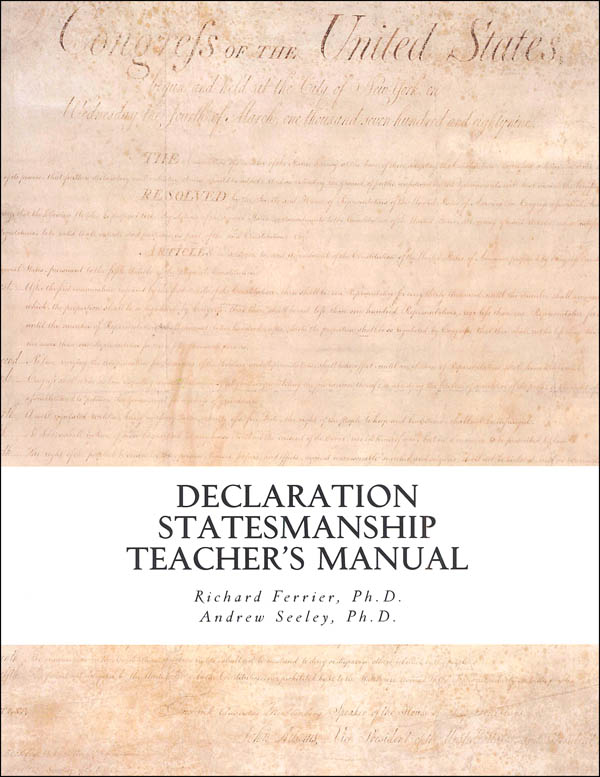 The Teacher's Manual is 68 pages and divided in four parts: lessons plans for a 14 week semester course; answer keys to the review questions in the Course the book of readings; ready-made quizzes and tests (with their answers); and teaching strategies. This helps tremendously in seeing the view of the course that the authors intend. The teaching strategies section is especially helpful. In it, the authors explain their purpose and goal for each chapter and give more background information and teaching tips for the teacher.
The Teacher's Manual is 68 pages and divided in four parts: lessons plans for a 14 week semester course; answer keys to the review questions in the Course the book of readings; ready-made quizzes and tests (with their answers); and teaching strategies. This helps tremendously in seeing the view of the course that the authors intend. The teaching strategies section is especially helpful. In it, the authors explain their purpose and goal for each chapter and give more background information and teaching tips for the teacher.
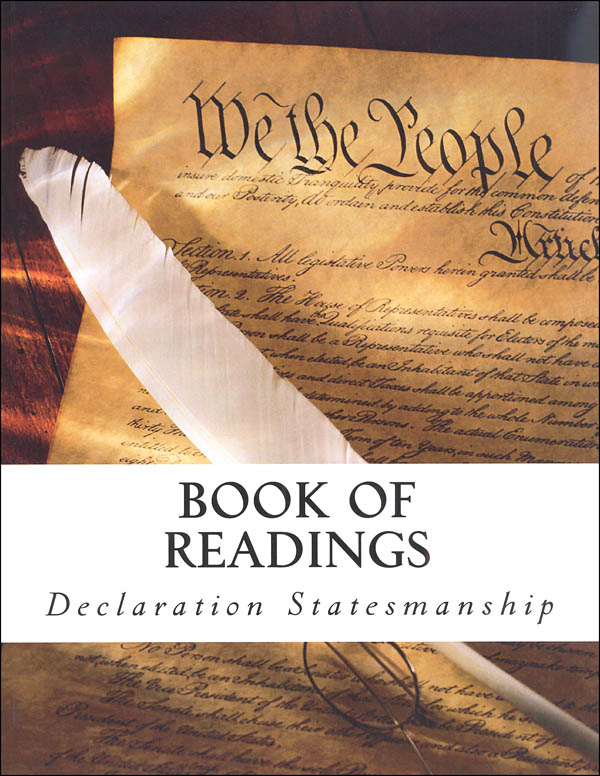 The Readings book is a 127 page collection of primary works that the student reads as part of the course. The authors have also thoughtfully included comprehension and discussion questions for each reading. Not all the readings required for the course are published in this volume, but most of the American sources are. For all other works needed, (mostly the ancient sources), the authors have listed web pages where they may be found. When I first reviewed this course, I thought that even though it was excellent, the finding of all these primary sources would be daunting for a homeschool family. This book of readings solves that problem!
The Readings book is a 127 page collection of primary works that the student reads as part of the course. The authors have also thoughtfully included comprehension and discussion questions for each reading. Not all the readings required for the course are published in this volume, but most of the American sources are. For all other works needed, (mostly the ancient sources), the authors have listed web pages where they may be found. When I first reviewed this course, I thought that even though it was excellent, the finding of all these primary sources would be daunting for a homeschool family. This book of readings solves that problem!
After reading this course a second time, I remain convinced that there is nothing like it!
Recommended for a semester Civics course for 11th or 12th grade.
The authors of this text are both tutors/professors at Thomas Aquinas College.
This book was donated for review by Drs. Ferrier and Seeley.
Text (154 pages), Teacher's Manual (68 pages) and Book of Readings (127 pages), available in softcover or pdf.
Designing your Own Classical Curriculum
DYOCC is quite a bit different from the other books on Catholic Homeschooling. Instead of simply discussing homeschooling, as the other books do, Mrs. Berquist outlines an entire homeschool curriculum you can use with your children or adjust to your liking. She includes suggestions for putting together your own curriculum and a grade by grade outline which includes recommended texts, sample weekly schedules, a number of study guides, lists of important dates and people, poetry suggestions and extensive lists of appropriate literature and history stories. I found her introduction very helpful in fine-tuning my educational goals for my children. Even parents who are happily using another curriculum will find this book a very valuable source of supplemental resources and tips for making homeschooling more interesting and more successful. Some homeschoolers consider her to be much stronger in the history, literature and religion areas and a little weaker on Science and Math. To learn more about the classical liberal arts curriculum as described in her book, you can also read Dorothy Sayers' "The Lost Tools of Learning."
Devotional Stories for Little Folks
Nancy Nicholson (author of numerous titles from Catholic Heritage Curricula including the My Catholic Speller and Language of God for Little Folks series) hits another homerun with this new title. Thirty-six stories centering around family life offer humor, entertainment and gentle lessons in morality. The stories are perfect for reading aloud during breakfast or lunch. Each story includes related quotes from the Bible or the Catechism of the Catholic Church, vocabulary words and questions for discussion. My children have taken great delight in listening to and "figuring out" these charming stories.
Dictionary of Ecclesiastical Latin
All Latin students will benefit from ready access to a Latin dictionary, but Catholic Latin students using a Catholic textbook, or reading from Church documents and the Vulgate Bible in their original Latin, will especially benefit from access to a Catholic Latin dictionary. The Dictionary of Ecclesiastical Latin has been written to help both seminary students and laypeople as they advance beyond their introductory Latin studies. The hardback binding, clear typeface, and non-shiny paper combine to make this book a pleasure to use. The more than 17,000 entries have been drawn from Sacred Scripture, the Codes of Canon Law of both 1918 and 1983, the liturgy, the documents of Vatican II, and the 1990 Code of Canons of the Eastern Churches. By providing the most common English definitions of Latin words and phrases as they are used by the Church, this wonderful reference book will be turned to again and again.
Did Adam and Eve have Belly Buttons?
Not just a catchy title, "Did Adam & Eve have Belly Buttons?" is an actual question posed by an eighteen-year-old boy. In fact, the whole book is organized around questions from teenagers about the faith. To make it easier to follow, the author has grouped them into twelve categories: God, Creation and Man, Religion and the Bible, Jesus Christ, Catholic Morality, etc.
Because of the layout of the book, the reader can either work his or her way through the book from front to back, or pick and choose topics of interest to him or her. For quick reference to find a particular question, there is also a topic/question index at the back of the book. With a total of 200 hundred questions, there are plenty to choose from! The revised edition includes over 800 Catechism and 500 Bible references to the same questions as in the original edition. At the end of the book, in addition to the index of questions, there is also a guide to confession, an examination of conscience, a list of resources, and a bibliography.
Some questions might be found in a Catechism, such as "What is hell?" Many, however, because they are posed by modern teenagers, are anything-but-typical... such as "Is it okay for Catholics to listen to non-Christian music?" In a way, the book is written by teenagers, and therefore should appeal to them. Although the answers are written in an easy to understand language, they are not watered down or silly, but serious, solid, and thought provoking.
Because of the nature of some of the questions concerning sex (there are just a small handful) I would not hand this book over to just any teen (remembering that these can range from 13 to 19 year olds). Since circumstances vary from family to family, the parents should take into account the maturity of the child, how they spend their time, and what kind of school or work they attend. Straightforward, honest and Catholic, the answers do not in any way arouse sexual curiosity. For example, in answer to a question about premarital sex, the author lists seventeen reasons to save sex for marriage.
Most of the questions in the book even a pre-teen could benefit from, such as "What is the difference between Catholic and Christian?"
While a young person may not pick up the Catechism of the Catholic Church voluntarily, he or she might be intrigued by the catchy title and want to read more and in the process enrich their faith.
Update from webmaster, March 2024: A revised edition came out in 2013, and the book details here are from that edition.
Dinner's in the Freezer: More Mary, Less Martha
Jill Bond is a big name in Christian Homeschooling circles. Her success in homeschooling her own children and at the same time being active in her community and among homeschoolers at large owes a great deal to the ideas which she outlines in this book. The book, subtitled A Home Management System, is primarily about a concept called "mega-cooking", i.e. cooking in larger quantities and freezing portions for later use. There are many advantages to this, especially in the areas of saving time (it doesn't take much longer to cook a double or triple batch) and money (take advantage of bulk pricing and be less dependent on convenience foods). I also like a lot of the underlying philosophy and appreciate the encouraging words and Mrs. Bond's poignant reminders of the dignity and importance of motherhood. To a certain extent, however, we found the recipes incompatible with our family's likings (for example, we don't use Velveeta).
Discover Your Child's Learning Style
If you have been wondering what is the key to getting your reluctant learner excited about math, science, or any other academic subject, Discover Your Child's Learning Style may be what you have been looking for. Written to the parents of public, private, or homeschooled students, the authors' goals are for the parents to get on their child's "team", have the child take the learning profile (learning assessment test), and coach him to learning success. Not just a book for students from an institutionalized setting, the authors make references throughout the text to various types of school settings.
With a combined experience of 45 years, these authors are dedicated to helping children succeed in their love of learning. They believe that by tapping into the child's learning style, the child will naturally love to learn. The child's learning style includes the child's talents, interests, modality, environment, and disposition. One of the best things about this book is that the authors recognize that you, the parent, are your child's primary teacher. They hope to have a positive effect on children's attitudes toward learning through the parents' powerful influence and involvement.
The authors begin by encouraging parents to develop a proper attitude. For example, parents need to take an active role in the child's education. They should also learn to "celebrate" the child for who he is and not criticize the child for who he is not. They encourage parents to model good behavior for their children. They encourage strengthening the bonds between children and their parents in additional ways as well.
After you have your child take the learning style profile, you will learn about the five different aspects covered in the test: disposition, talents, interests, modality, and environment. The various categories for disposition include someone who performs, produces, invents, relates/inspires or thinks/creates. The areas of talent include music, math-logic, mechanical reasoning, spatial, word-language reasoning, and seven more. In assessing the child's interests, the authors note that the child's interests may differ at home than from those at school. Modality refers to the type of learner your child is. This is what we most often associate with learning style. Is the child an auditory, visual, or kinesthetic learner? These can help assess the child's learning environment for improvements. Some factors to consier include: does the child prefer quiet or noise, laying down or sitting at a desk, a bright or dim light? You can see that the authors' definition of learning style is broader and more variable than most.
Because of the lengthy and detailed descriptions of the various dispositions (perform, produce, invent, relate/inspire or think/create), the child or parent should easily be able to identify which disposition is closest to the child. Since they are presenting material associated with the child's learning style, their perspective is from an educational standpoint. They begin by describing a person who fits that disposition. For example, a performer is a person who is "bright, witty, and outspoken." As adults, they are entertainers, actors, athletes, trial lawyers, etc. They then go on to discuss the learning characteristics, the preferred setting for learning, what that child contributes to a situation, the areas of growth, the relationship conflicts between a child of one disposition and a teacher of an opposing disposition, the ideal curriculum, homework helps, and motivators. At the end of each chapter, they also offer a quick reference chart with the program emphasis, preferred activities, helpful materials with exact titles for specific subjects, and teaching techniques. As parents, we need to also keep in mind that sometimes we can adapt the materials we already own by employing different teaching techniques.
If you are beginning to be overwhelmed with all the terminology or aspects of a child's learning style, don't be. There are lots of charts and graphs that clearly explain what should work best for your child. There is an incredible amount of information in this book, including putting the plan to work, dealing with special needs children, pages of recommended resources, and much more. Whether you are having difficulty with teaching your child or not, Discover Your Child's Learning Style has much to offer and much to digest. Since one of our goals as parents is to have our children reach their full potential, this book may help you to see your child in a totally new light.
Do Re Mi
A dear blog reader recommended this picture book on the life of Guido d'Arezzo, the Benedictine monk who came up with the system for writing music one thousand years ago–the same system we still use today. I requested it via inter library loan since our library does not own the title.
I liked the way the life of the monks is described, but I wonder about the illustrations... in the book the monks look more like Dominicans in white habit... Honestly, my wish is for the book to be re-ilustrated by another artist! Still, a very nice cultural picture book and... you may not mind the style of the illustrations!
Doing Simple Math in Your Head
What fun! Doing Simple Math in Your Head compiles all sorts of amazing mathematical tricks into one diaper-bag-sized book, ready for those odd moments spent in waiting rooms and restaurants. Have you ever needed to figure a tip quickly, without resorting to writing on the napkin? Have you ever wondered how others can convert fractions to decimals so quickly? Have you ever worried that your receipt was not computed correctly but didn't have a calculator available to check it quickly? After working through this book, you will have an arsenal of tricks available to do these things in your head, quickly and accurately.
According to Mr. Howard, "being able to do problems in your head is basically being able to simplify. When you can do that, the rest is easy." He leads us through three chapters, elegantly and simply teaching us how to look at things differently so that they become easier. The book begins with an Introduction that describes how these methods are different from what we learned from our schoolbooks. This is followed by three chapters titled "Making Things Easier", "Problems and Solutions", and "Background: Basic Arithmetic". The book closes with an Index and a Glossary of technical "math" words that are not necessarily used in the book but which should be understood. The book is organized with subtitles at the top of each page, allowing you to skim quickly to find the topic you need or to browse until you find an interesting topic to study. Spending a few hours practicing the techniques taught in this book will make practical, everyday math much easier!

